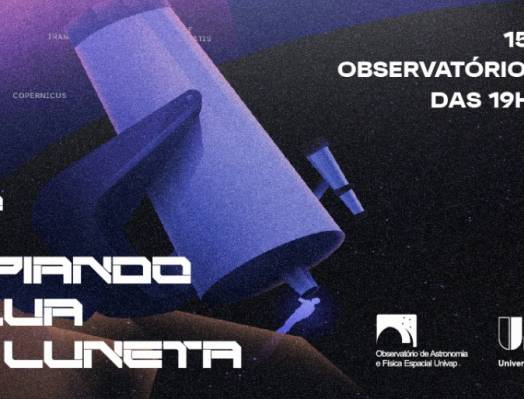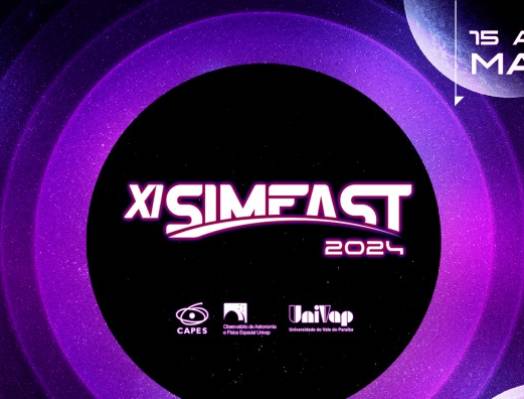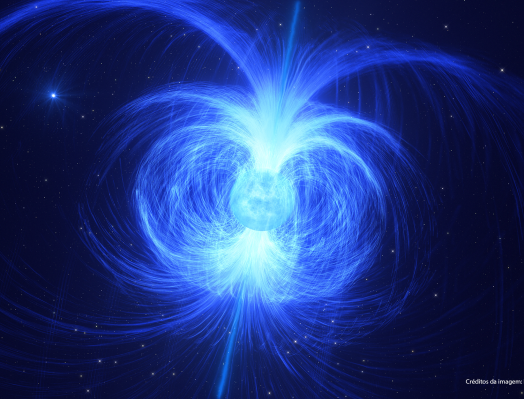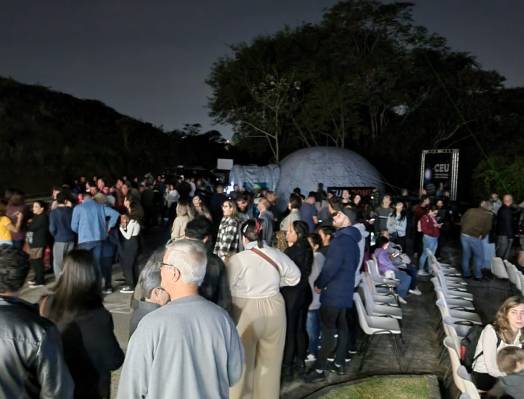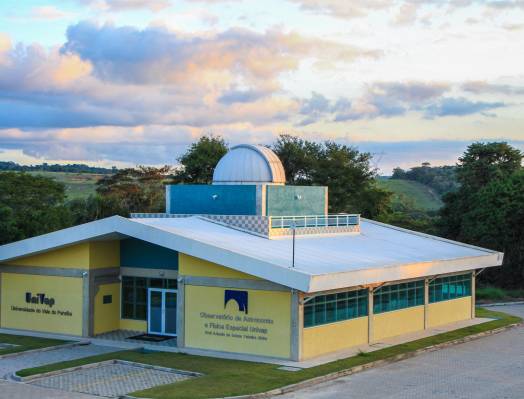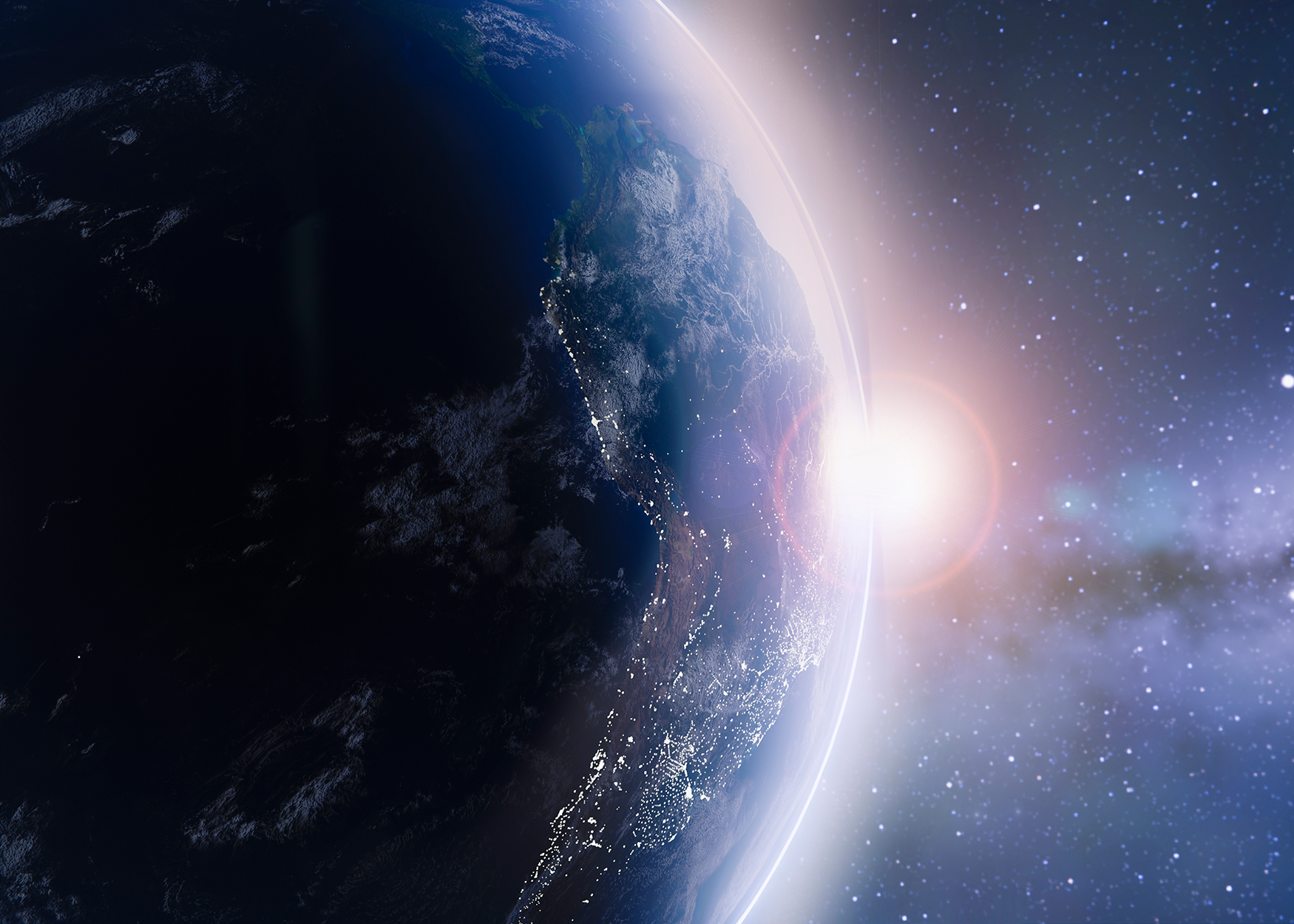


Univap’s Graduate Program in Physics and Astronomy is rated Level 4 by CAPES and aims to train researchers and professionals dedicated to advancing Space Physics, Astronomy, and Condensed Matter Physics in Brazil. The program is designed to qualify graduates from Physics, Astronomy, Mathematics, Chemistry, Computer Science, Engineering, and related fields.
Students in the program engage in projects involving the development of new instruments (such as photometers, interferometers, and spectrometers), data modeling and analysis in Space Physics and Astronomy, and the study of new materials, multifunctional nanomaterials, superconductors, semiconductors, and biological materials using Raman and FT-IR spectroscopy. This work is carried out alongside faculty researchers and in collaboration with national and international research groups.
The program offers a strong infrastructure, including its own laboratories and observatories at the São José dos Campos campus and in other locations across Brazil, such as Manaus (AM), Jataí (GO), and Araguatins (TO). It also features a high-performance computing center. Students and researchers have access to and frequently use internationally renowned astronomical observatories, including Gemini and SOAR.
Objective
The Master’s and PhD Program in Physics and Astronomy at Univap aims to train researchers and professionals to contribute to the development of Space Physics, Astronomy, and Condensed Matter Physics in Brazil. It is intended for graduates in Physics, Astronomy, Mathematics, Chemistry, Computer Science, Engineering, and related disciplines.
Concentration Area I – Astrophysics
Research Lines:
• Type Ia Supernovae, Cataclysmic Variables, and X-ray Binaries
• Extragalactic Astrophysics
• Experimental Astrochemistry
• Solar Physics
• Numerical Simulations of Colliding Galaxies
Concentration Area II – Space Physics
Research Lines:
• Upper Atmosphere Physics
• Ionospheric Physics
• Mesospheric Physics
• Study of Troposphere-Mesosphere / Mesosphere-Ionosphere Coupling
• Sun-Earth Relationship Physics (Space Weather)
• Solar Physics
• Study of Sun-Earth-Climate Interrelations through Observational and Natural Records
Concentration Area III – Condensed Matter Physics
Research Lines:
• Study of Thermomechanical Properties of Hydrogenated Carbon-Nitrogen Amorphous Alloys
•
Study of the Biochemical Composition of Human Skin by In Vivo Raman Spectroscopy
•
Study of the Biochemical Composition of Biological Materials by Raman Spectroscopy and FT-IR Imaging
•
Disease Diagnosis Using Nanosonde
Prof. Valdir Gil Pillat
Coordinator
Prof. Alexandre Soares de Oliveira
Vice coordinator
Concentration Area I – Astrophysics
Alexandre Soares de Oliveira
Lattes | ORCID
Has experience in the field of Astronomy, with an emphasis on Stellar Astrophysics, working mainly on the following topics: cataclysmic variables, X-ray binaries, and astronomical instrumentation.
Irapuan Rodrigues de Oliveira Filho
Lattes | ORCID
Has experience in the field of Astronomy, with an emphasis on Extragalactic Astrophysics, working mainly on the following topics: stellar system dynamics through observational and numerical approaches, using N-body numerical simulations; dynamics.
Oli Luiz Dors Junior
Lattes | ORCID
Has experience in the field of Astronomy, with an emphasis on Interstellar Medium Astrophysics and Extragalactic Astrophysics, working mainly on the following topics: HII regions, chemical evolution of galaxies, and galaxies with active nuclei.
Sergio Pilling Guapyassu de Oliveira
Lattes | ORCID
Works in the fields of Laboratory Astrophysics or Experimental Astrochemistry, Astrobiology, Experimental Physics, and Physical Chemistry, with an emphasis on Molecular Spectroscopy (TOF-MS) and Infrared Spectroscopy (FTIR).
Area of Concentration II – Space Physics
Alan Prestes
Lattes | ORCID
Has experience in the field of Solar-Terrestrial Physics, working mainly on the following topics: solar activity, Sun-Earth-Climate relationship, interplanetary medium, geomagnetic activity, natural records, and time series analysis.
Alexandre Tardelli
Lattes | ORCID
Has experience in the field of Space Physics, Sun–Earth relationship, and Ionospheric Physics, working mainly on the following topics: F3 layer, multiple stratifications of the F region, equatorial and low-latitude ionosphere, and ionospheric irregularities – plasma bubbles and blobs.
Arian Ojeda González
Lattes | ORCID
Works in the field of Geosciences, with interests in time series analysis of geophysical quantities, astrophysical plasma physics, data processing, spectral analysis, interplanetary disturbances, geomagnetic storms, and ionospheric physics.
Marcio Tadeu de Assis Honorato Muella
Lattes | ORCID
Works in the fields of Space Physics, Aeronomy, and Radio Wave Propagation, primarily focusing on the following topics: ionospheric monitoring using GPS, ionosondes, and imagers; modeling and forecasting of ionospheric scintillation; GPS applications; ionospheric effects on global navigation satellite systems (GNSS); atmospheric modeling; and ionospheric radio tomography.
Paulo Roberto Fagundes
Lattes | ORCID
Has experience in the field of Space Physics, Sun-Earth relationship Physics, Upper Atmosphere Physics, and Ionospheric Physics.
Valdir Gil Pillat
Lattes | ORCID
Has experience in the fields of Computer Science and Ionospheric Physics, with an emphasis on Artificial Intelligence, working mainly on the following topics: ionosphere, ionogram, fuzzy logic, programming languages, and ionospheric modeling.
Virginia Klausner de Oliveira
Lattes | ORCID
Has experience in the field of Geosciences, with an emphasis on aeronomy and space geophysics. Also works in the area of signal processing, with experience in the use, development, and improvement of mathematical tools.
Area of Concentration III – Condensed Matter Physics
Leandro José Raniero
Lattes | ORCID
Has experience in the deposition/characterization of thin-film semiconductor devices, synthesis/characterization of nanoparticles, and surface functionalization of nanostructures with proteins, DNA, and photosensitizers. Background includes spectroscopic ellipsometry, optical spectroscopy (UV-visible, infrared, and Raman), and deposition systems using reactive gases.
Lúcia Vieira
Lattes | ORCID
Holds a Master's and Ph.D. in Science from the Aeronautics Institute of Technology (ITA), in the field of Physics and Chemistry of materials for space applications, with degrees obtained in 2000 and 2004, respectively. Implemented and contributed to the consolidation of the Tribology Laboratory at INPE between 2004 and 2008. In 2008, served as a visiting professor at Argonne National Laboratory in Chicago. Secured funding for 10 research project proposals from FAPESP, 7 from CNPq, and 1 from the Brazilian Space Agency (AEB). Completed a postdoctoral program in Physics at ITA through the National Postdoctoral Program – PNPD / 2009–2010.
Researchers and students in our Program use a variety of infrastructures for the development of scientific research. These laboratories and observatories are located on the campus in São José dos Campos (SP) and in other parts of Brazil, such as Palmas (TO), Manaus (AM), Jataí (GO), and Araguatins (TO). In addition to this proprietary infrastructure, the Program’s researchers and students have access to, and are frequent users of, national and internationally renowned astronomical observatories such as Gemini, SOAR, and the Nobeyama Radio Interferometer.
Laboratories:
- Nanosensors Laboratory
- Nanotecplasma Laboratory
- Extragalactic Astrophysics and Interstellar Medium Laboratory
- Laboratory of Astrochemistry and Astrobiology (LASA)
- High-Performance Computing Laboratory
- Space Physics Laboratory
- Natural Records Laboratory
- Univap Astronomical Observatory
MASTER'S CURRICULUM STRUCTURE
FIRST SEMESTER
FIS 602 - Electrodynamics I | 4.0
FIS 603 - Mathematical Methods and Signal Analysis | 4.0
FIS 610 - Seminars in Physics and Astronomy | 2.0
TOTAL CREDITS: 10.0
SECOND SEMESTER
Elective course according to Area of Concentration and Dissertation Work
FIS 654 - Introduction to Scientific Computing | 4.0
FIS 601 - Quantum Mechanics | 4.0
TOTAL CREDITS: 8.0
The Specific Training course is generally chosen as follows:
COURSE | AREA OF CONCENTRATION
FIS 605 - Space Physics I | Space Physics
FIS 614 - Fundamental Astrophysics | Astrophysics
FIS 644 - Optical Spectroscopy: Principles and Applications | Condensed Matter Physics
SPECIFIC TRAINING COURSES
FIS 639 - Astrobiology | 4.0
FIS 615 - Interstellar Medium Astrophysics I | 4.0
FIS 647 - Interstellar Medium Astrophysics II | ---
FIS 614 - Fundamental Astrophysics | 4.0
FIS 619 - Observational Astrophysics I | 4.0
FIS 648 - Observational Astrophysics II | ---
FIS 635 - Extragalactic Astronomy | 4.0
FIS 638 - Astrochemistry | 4.0
FIS 641 - Optical Biopsy by Raman and FT-IR Spectroscopy | 4.0
FIS 627 - Upper Atmosphere Dynamics | 4.0
FIS 643 - Stellar Systems Dynamics I | 4.0
FIS 646 - Stellar Systems Dynamics II | ---
FIS 621 - Electrodynamics II | 4.0
FIS 644 - Optical Spectroscopy: Principles and Applications | ---
FIS 636 - Variable Stars | 4.0
FIS 628 - Ionosphere Physics | 4.0
FIS 631 - Outer Magnetosphere Physics | 4.0
FIS 606 - Sun-Earth Relationship Physics | 4.0
FIS 622 - Plasma Physics I | 4.0
FIS 608 - Solid State Physics | 4.0
FIS 653 - Cosmic Ray Physics | 4.0
FIS 605 - Space Physics I | 4.0
FIS 618 - Space Physics II
FIS 652 - Molecular Physics | 4.0
FIS 632 - Solar Physics | 4.0
FIS 634 - Star Formation | 4.0
FIS 645 - Fundamentals of Wave Propagation in the Ionosphere | ---
FIS 633 - Atmospheric Luminescence | 4.0
FIS 637 - Celestial Mechanics and Dynamical Astronomy | 4.0
FIS 629 - Classical Mechanics | 4.0
FIS 604 - Fluid Mechanics | 4.0
FIS 630 - Statistical Mechanics | 4.0
FIS 609 - Higher Education Methodology | 3.0
FIS 607 - Materials Characterization Methods | 4.0
FIS 640 - Applied Optics and Lasers | 4.0
FIS 649 - Radio Astronomy | 4.0
FIS 650 - Solar Radio Physics | 4.0
FIS 651 - Radio Interferometry | 4.0
FIS 624 - Seminars in Physics and Astronomy II | 4.0
FIS 625 - Seminars in Physics and Astronomy III | 4.0
FIS 626 - Seminars in Physics and Astronomy IV | 4.0
FIS 642 - Materials Characterization Techniques | 4.0
FIS 611 - Special Topics in Astronomy | 4.0
FIS 613 - Special Topics in Condensed Matter Physics | 4.0
FIS 612 - Special Topics in Space Physics | 4.0
TOTAL CREDITS: 159.0
DOCTORAL CURRICULUM STRUCTURE
The Physics and Astronomy program offers three areas of concentration:
(1) Space Physics, (2) Condensed Matter Physics, and (3) Astrophysics.
Students must take Basic Training courses in their chosen area and Specific Training courses, whose offerings vary depending on semester demand. Specific Training courses usually focus on particular aspects of research within a field.
Each graduate course corresponds to a number of credits. One credit equals 16 hours of classes. Most standard courses in the program are worth 4 credits (64 hours).
To obtain the doctoral degree, students must complete at least 60 credits, distributed as follows:
- 12 or more credits in Basic Training courses;
- 8 or more credits in Specific Training courses;
- 30 credits corresponding to the Doctoral Thesis.
Credits earned during the Master's may be counted, subject to the Program's Internal Committee approval.
The regular duration of the Doctoral course is 48 months, with a maximum of 60 months. Students who do not finish within this period will be dismissed from the Graduate Program.
Discipline credits should be completed preferably in the first 2 years, while the third and fourth years are dedicated to research and thesis writing.
BASIC TRAINING COURSES
FIS 606 - Sun-Earth Relationship Physics | 4.0
FIS 608 - Solid State Physics | 4.0
FIS 616 - Radiative Processes | 4.0
FIS 617 - Stellar Structure and Evolution | 4.
FIS 619 - Observational Astrophysics | 4.0
FIS 618 - Space Physics I | 4.0
FIS 620 - Galactic Structure | 4.0
FIS 622 - Plasma Physics I | 4.0
FIS 640 - Applied Optics and Lasers | 4.0
FIS 602 - Electrodynamics I | 4.0
FIS 603 - Mathematical Methods and Signal Analysis | 4.0
FIS 654 - Introduction to Scientific Computing | 4.0
FIS 601 - Quantum Mechanics | 4.0
FIS 629 - Classical Mechanics | 4.0
FIS 630 - Statistical Mechanics | 4.0
TOTAL CREDITS: 60.0
SPECIFIC TRAINING COURSES
(Same as those listed in the Master's structure, total credits: 160.0)
AV. SHISHIMA HIFUMI, 2911 - URBANOVA - SÃO JOSÉ DOS CAMPOS - SP - FONE:(12) 3947-1000
Boleto
Reportar erro!
Comunique-nos sobre qualquer erro de digitação, língua portuguesa, ou de uma informação equivocada que você possa ter encontrado nesta página:
Por Redação, em Master's and Doctorate
